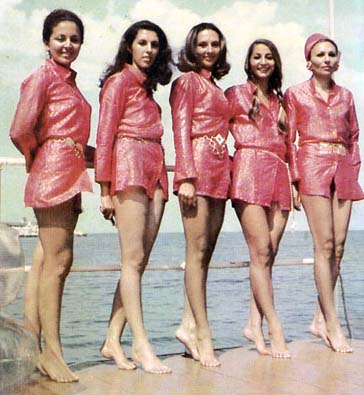is based on prior knowledge, online sources, and personal studies.
YouTube Video: "The Definition of Beauty"
Another way people perceive aesthetic attractiveness is through color. When concentrating on color, one can begin to understand its importance to a world that is very much based on aesthetically pleasing images. When complementary colors (opposite colors on the color wheel, such as 'red and green' or 'purple and yellow') are put side-by-side, something's aesthetic value can be heightened. The use of these types of colors attracts attention from the viewer and also can leave one with various feelings.
Beauty, a word that means "the quality present in a thing or person that gives intensepleasure or deep satisfaction to the mind, whether arisingfrom sensory manifestations (as shape, color, sound, etc.),a meaningful design or pattern, or something else (as apersonality in which high spiritual qualities are manifest).", is a definition that has been passed down through decades and centuries, even if in other countries and societies. According to several sources, in the 1700's, female body beauty was based on the "pear-shape" (one of a woman who worked in the fields and bore many children). In the 1800's the standard was a "rectangular-shape" (of a woman who stayed indoors, wore corsets, and was pale and thin). The early 1900's definition of bodily beauty was based on the "thin rectangular-shape" (not yet curvy, but very thin, with un-athletic long legs and arms. In the middle of the 1900's the "hourglass-shape" of popular pin-up models became overwhelmingly popular and gave way to society's current perception of the female body. All these shapes are linked directly to symmetric geometrical shapes in math. The following images are perceptions of beauty over the last hundred years in both America and several different countries:
DaVinci was one of the first artists to successfully be both a brilliant artist and mathematician. The image to the left is study on the proportions of the human face. DaVinci found that when these proportions are changed slightly, different aesthetic responses could be taken from viewers.
This Renaissance sculpture on exhibition in the Louvre is the medieval definition of female beauty. There was not much concentration on large breasts or thin features as there is now. Beauty was defined by a "healthy" body. Much like the definitions of beauty from other centuries, the bodies of women were pleasing to the eye when symmetrical.
A beauty pageant from the 1920's.
A painting of an aesthetically pleasing Japanese woman from
the 1940's-1950's. The beauty of the facial features were based heavily on symmetry and the presence of "small" features
One of the most popular pin-up girls from the 1950's, Bettie Page. People began to pay more attention to shape. As the era of pin-ups grew so did the perception of beauty. The emphasis on balance and line is part of today's society's perception of beauty.
1970's image of tanned women with long legs. At this time people began to focus more on the length of legs and thinness of the human body.
Resources used:
Wikipedia: Color Theory
Wikipedia: Complementary Colors
Wikipedia: Aesthetics
Wikipedia: Beauty
YouTube Video





